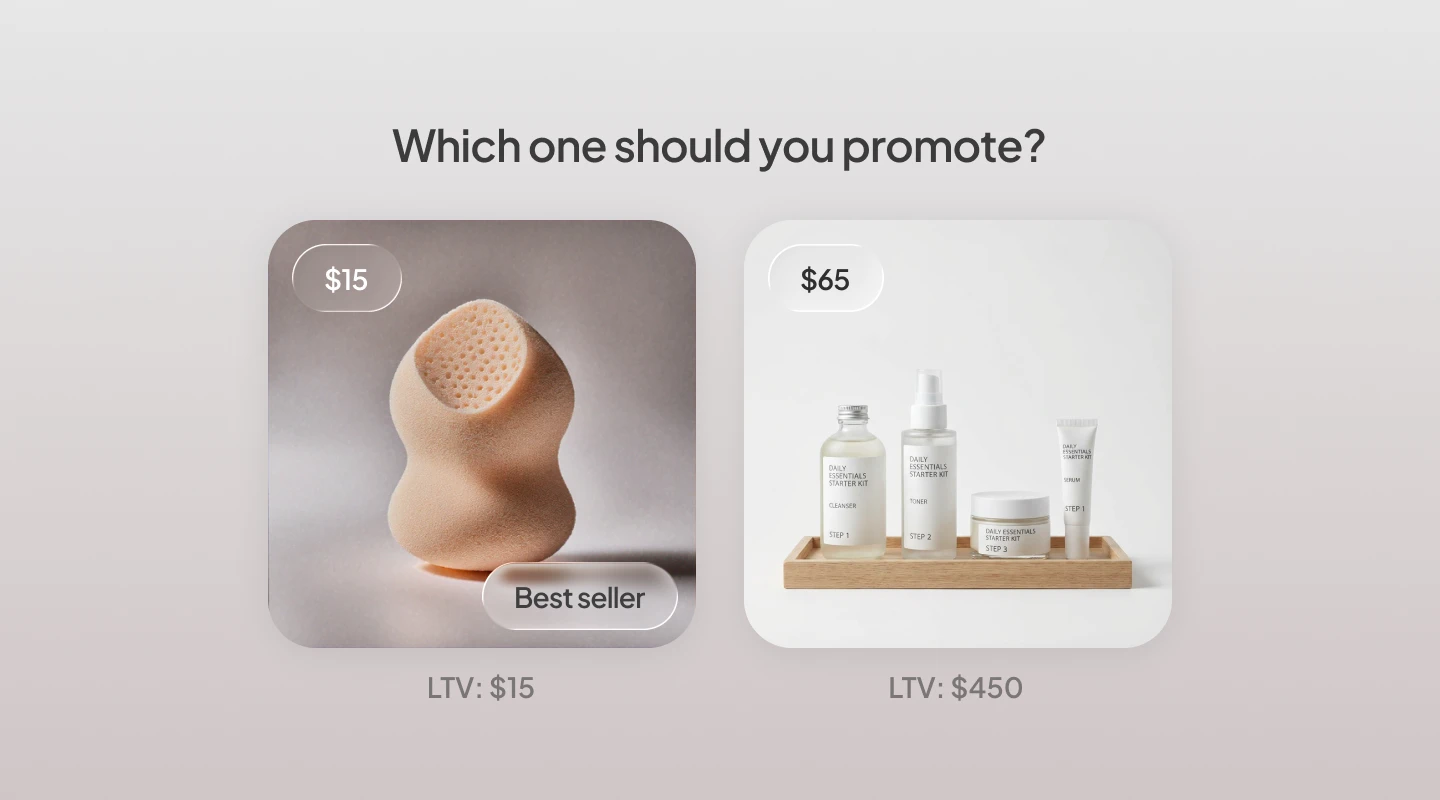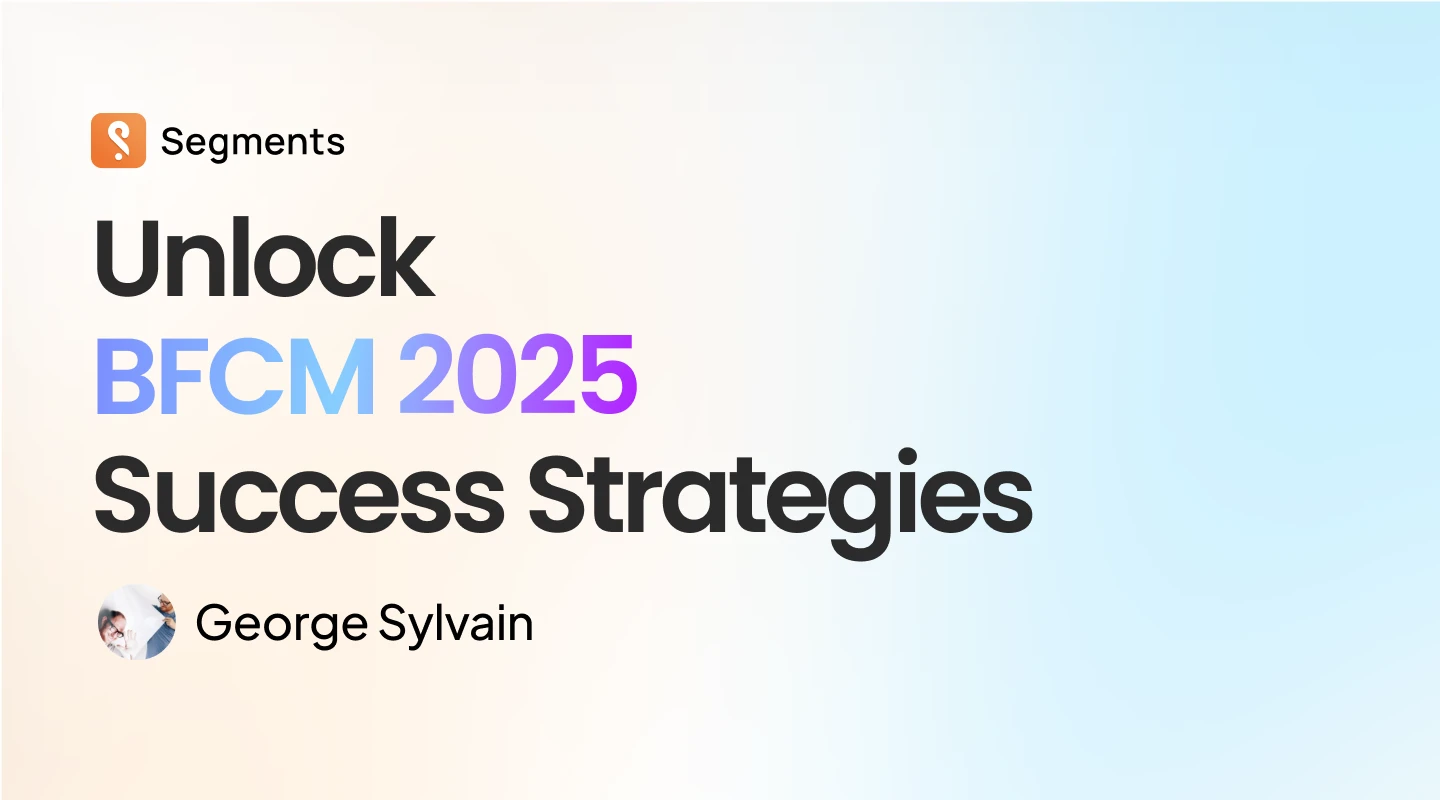
[Guest post by Nelson Jordan]
Marketers who use segmented campaigns see up to a 760% increase in revenue.
And yet, as a conversion copywriter and growth marketer in the SaaS and ecommerce industry, I can count the number of times I’ve recommended a segmentation tool to my clients on one solitary finger.
Here’s why...
Most data analysis tools for ecommerce businesses are clunky, hard-to-use and even harder to understand. You shouldn’t need a degree in data science to know how your Shopify store is doing.
Other software caters purely for the big boys. Heap is used by Chubbies, Casper and Harry’s, which is quite the roster.
But if their free plan doesn’t give you everything you need, the next jump is an eye-watering $12k per year.
However, these complaints are minor compared to my single biggest bugbear....
Most data analysis tools fail the ‘so what?’ test
They tell you things like…
- Churn rate is 29% this month
- Number of visits has fallen by 8%
- Revenue increased by 22%
So what?
What’s an ecommerce store owner supposed to do with that information? What changes should you make to your Shopify store or your marketing?
The issue is that the data and ‘insights’ that these tools provide you with isn’t actionable.
So rest assured, I’m thrilled to report that I’ve finally found a tool that passes the ‘so what?’ test with flying colours — Segments Analytics by Tresl.
Segments Analytics is built by two former LinkedIn data scientists with the goal of making data science accessible to everyone in ecommerce, no matter your budget.
And what’s more, their software is designed to be actionable.
Getting the most out of Segments
Segments integrates with your Shopify store and email platform, segments your data (hence the name!) and tells you what to do next to make the most money possible from your customers.
With the software, you can create your own segment based on the criteria that’s most important to you, but includes the most common and important segments straight out of the box.
Here are five of the most valuable segments that come pre-made. These are an absolute must-have for anyone looking to grow your ecommerce business.
1. One timers
Segments definition:
Customers with exactly one purchase.
Background:
Did you know that the cost of acquiring a customer has grown by 50% in the last 5 years? Many ecommerce companies struggle to make a profit on their first sale to each individual customer.
The ecommerce companies that scale profitably are those that understand Customer Lifetime Value (CLV) and have an effective way of generating a second and third purchase at a cheaper rate. Email is king here - there’s a reason it’s the highest ROI marketing channel.
How to use:
Use this customer segment (or dig down further using Active one timers or At risk one timers) to find the customers you need to get to make a second purchase. Use the ‘Product Analysis’ functionality to discover which products are typically bought as a second purchase and create an email campaign focusing on that product.
2. Active new signups
Segments definition:
Customers who haven’t purchased yet, but have entered their email into Shopify within the active window (<2 days on average.)
Background:
When someone signs up for your store or newsletter, it’s a great indication of their level of interest in your company. Ciceron found that new subscribers were most engaged with 48 hours of signing up. Striking while the iron is hot increases your chances of converting a subscriber to a customer.

How to use:
Analyze how your ‘new subscriber welcome sequence’ is performing through the helpful email integration. Use this segment to understand the difference in performance when you test:
- Different email content
- The number of days after subscribing
- The incentives you offer
Working hard to optimize your welcome sequence will generate a large uptick in revenue - when you turn a subscriber into a customer, you’re increasing your Customer Lifetime Value many times over, not just one.
3. Most likely to churn
Segments definition:
Customers from the at risk lifecycle journey stages who have the highest chance of never coming back
Background:
The longer it’s been since someone purchased from you, the less likely they are to buy from you again. For example, if a customer normally buys from you roughly every five weeks, but hasn’t purchased in eight weeks, you need to act to change their behavior, otherwise you’ve likely lost that customer.

It’s much cheaper to retain an existing customer than attract a new one — in fact, a Harvard Business School study found that increasing customer retention by 5% had the potential to increase profitability by up to 95%, so make sure you focus on keeping customers for as long as possible.
How to use:
Create a solo email or email sequence to re-engage customers that are likely to churn. Provide an incentive like free shipping, 2-for-1 or a discount to keep them interested. Because you know they are at the highest risk of churning, this allows you to add more urgency in your approach.
4. Churned customers
Segments definition:
Customers who’ve bought 1+ orders but have now churned (passed the lapse point of the buying cycle.)
Background:
Following on from the previous segment, Churned customers shows you which customers have already reached the stage where they have exited your average buying window. Still, as we saw earlier, it’s cheaper to bring back a previous customer who hasn’t bought from you in a while than to acquire a new customer, so this is a good use of resources.
How to use:
Choose the whole segment or dig down further into churned loyals, churned high value or churned repeats for specific messaging. This is where the ‘we haven’t seen you in a while’ emails come into play, like this one from Typeform…

Many ecommerce companies fall into the trap of offering deep discounts straight away in this situation, which eats into already-tight margins or risks the brands being perceived as a ‘discounter’.
Instead, try re-engaging churned customers by attempting to get them complete a mini-conversion, e.g. reading your latest blog or sharing a social media post, before moving to other incentives.
5. Loyals
Segments definition:
Customers who’ve bought 3+ orders.
Background:
You might ask ‘Why should we analyze our loyal customers? Surely we’re already doing everything right, otherwise they wouldn’t be loyal?’
Well, there’s the Pareto Principle, otherwise known as the 80/20 rule. 20% of your customers are probably generating 80% of your revenue.
Unlike all the other segments above, we’re not trying to change these customers’ behavior. We’re trying to understand it so we can turn other customers into loyal buyers too!
How to use:
Open this segment and look for three key points:
- Which products did they buy and in which order?
- What marketing channel(s) brought them to your ecommerce store?
- Which marketing campaign converted them?
Once you’ve identified the top products, marketing channels and marketing campaigns, it’s time to double down.
Can you use the products that create loyal customers in more of your marketing? Perhaps you can include that product in your welcome sequence or your paid marketing?
Can you allocate more budget and resources to the marketing channels and campaigns that create loyal customers and reduce budget from those that don’t? Regardless of how you do it, you need to be using this data.
Segment your way to success
Scaling your ecommerce business profitably is hard. Customer acquisition costs are rising and as the overall ecommerce market grows, so does competition.
The businesses that succeed will be those that use their data in a smart way to make more Revenue Per User (RPU) than the competition. These businesses can afford to pay more to acquire a customer, confident in the knowledge they’ll exceed that figure with repeat transactions and an impressive Customer Lifetime Value.
For one, I’m glad that I now have a data analysis tool that I can wholeheartedly stand behind and recommend to all of my ecommerce clients.
So if you’re looking to grow your ecommerce brand, make sure you sign up for Segments’ free trial today.
Author Bio:
Nelson Jordan is a conversion copywriter, content strategist, digital marketer and host of the ‘Working From Home’ podcast. With more than 10 years’ experience helping companies grow their revenue, he provides tips, tricks and strategies for success at his blog www.nelson-jordan.com.








